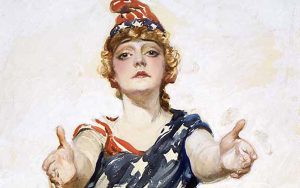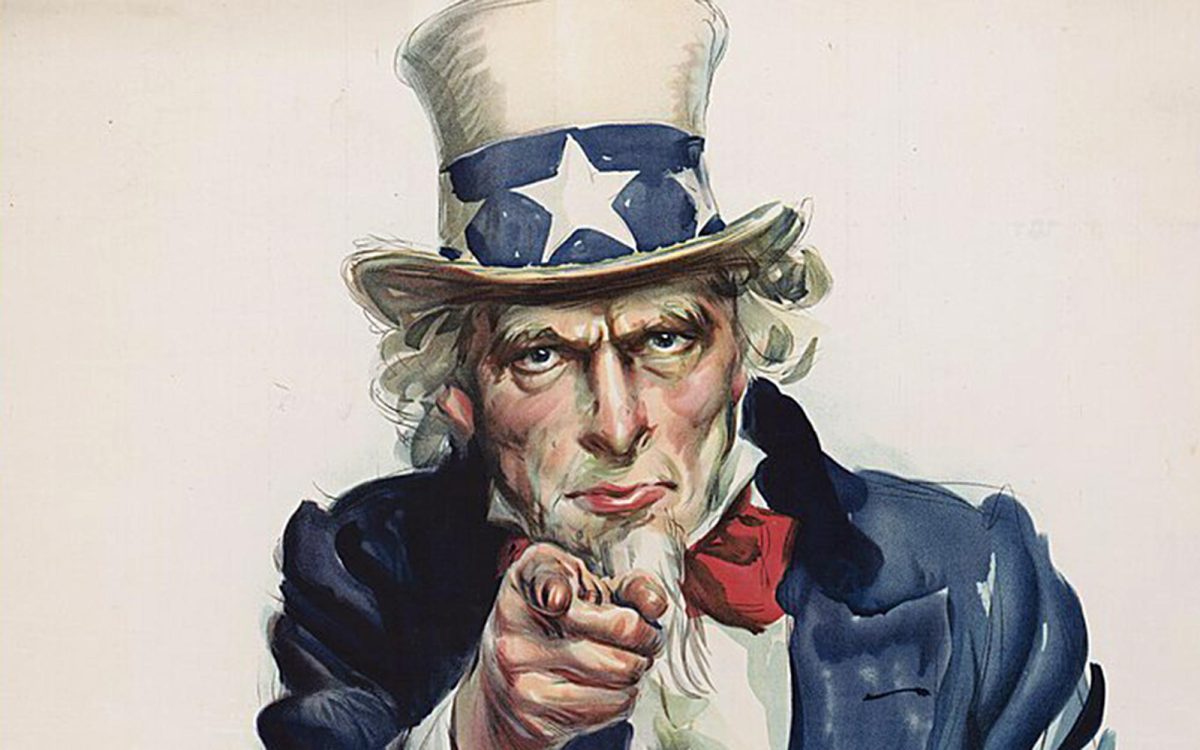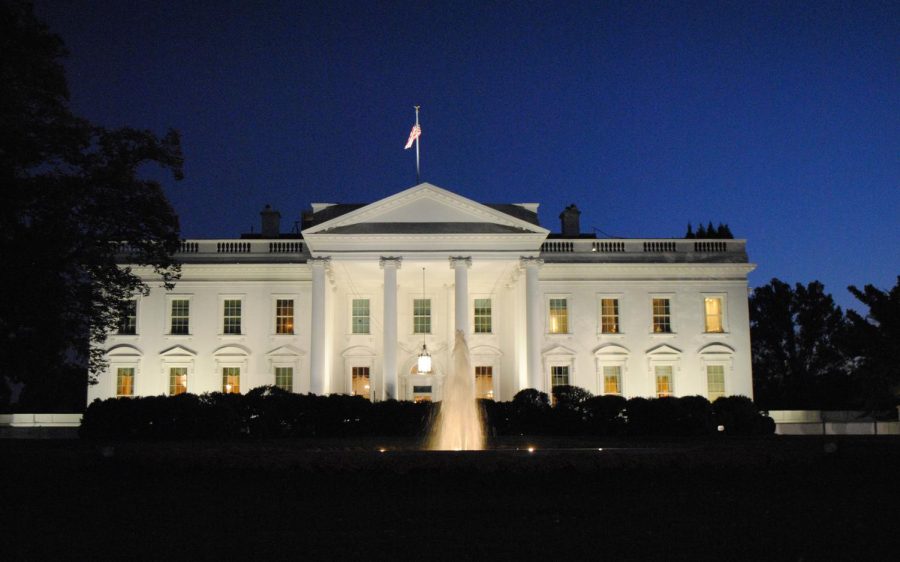The national personification of the United States federal government was the creation of a U.S. Army recruiting poster during World War I.
James Montgomery Flagg’s 1917 poster was based on the original British Lord Kitchener poster of three years earlier. It would go on to be used to recruit American soldiers for both World War I and World War II. Flagg used a modified version of his own face for Uncle Sam, and Army veteran Walter Botts provided the pose.
Using the same initials as our national symbol, Uncle Sam is a common national personification of the federal government or the country in general. Since the early 19th century, Uncle Sam has been a popular symbol of the U.S. government in American culture and a manifestation of patriotic emotion.
According to legend, the character first came into use during the War of 1812 and may have been named for Samuel Wilson, an American meat packer who lived in Troy, New York, whose name is purportedly the source of the personification of the United States known as Uncle Sam. The actual origin is obscure, however. The first reference to Uncle Sam in formal literature outside of newspapers was in the 1816 allegorical book, “The Adventures of Uncle Sam.”
 While the figure of Uncle Sam specifically represents the government, the female figure of Columbia represents the United States as a nation.
While the figure of Uncle Sam specifically represents the government, the female figure of Columbia represents the United States as a nation.
The earliest known personification of the United States was as a woman named Columbia, who first appeared in 1738 and sometimes was associated with another female personification, Lady Liberty.
Uncle Sam finally appeared after the War of 1812. Columbia appeared with either Brother Jonathan or Uncle Sam, but her use declined as a national person in favor of Liberty, and she was effectively abandoned once she became the mascot of Hollywood’s Columbia Pictures in the 1920s.
The precise origin of the Uncle Sam character is unclear, but a popular legend is that the name Uncle Sam was derived from Wilson, who supplied meat rations for American soldiers during the War of 1812. There was a requirement at the time for contractors to stamp their name and where the rations came from onto the food they were sending.

Wilson’s packages were labeled “E.A.-U.S.” When someone asked what those initials stood for, a co-worker jokingly said, “Elbert Anderson (the contractor) and ‘Uncle Sam,’” referring to Wilson, though the U.S. actually stood for “United States.”
Doubts have been raised as to the authenticity of this story, as the claim did not appear in print until 1842. Additionally, the earliest known mention definitely referring to the metaphorical Uncle Sam is from 1810, predating Wilson’s contract with the government.
A clockmaker in an 1849 comedic novel explains “… we call … the American public ‘Uncle Sam,’ as you call the British ‘John Bull.’”
By the 1850s, the names Brother Jonathan and Uncle Sam were being used nearly interchangeably, to the point that images of what had previously been called Brother Jonathan were being called Uncle Sam.
Similarly, the appearance of both personifications varied wildly. For example, one depiction of Uncle Sam in 1860 showed him looking like Benjamin Franklin, while a contemporaneous depiction of Brother Jonathan looks more like the modern version of Uncle Sam, though without a goatee.
Uncle Sam did not get a standard appearance, even with the effective abandonment of Brother Jonathan near the end of the American Civil War, until the well-known recruitment image of Uncle Sam was first created by Flagg during World War I. It is this image more than any other that has influenced the modern appearance of Uncle Sam, an elderly white man with white hair and a goatee, wearing a white top hat with white stars on a blue band, a blue tail coat, and red-and-white-striped trousers.
Flagg’s depiction of Uncle Sam was shown publicly for the first time, according to some, on the cover of the magazine Leslie’s Weekly on July 6, 1916, with the caption, “What Are You Doing for Preparedness?” More than four million copies of this image were printed between 1917 and 1918.
Flagg’s image also was used extensively during World War II, during which America was code named “Samland” by the German intelligence agency Abwehr. The term was central in the song “The Yankee Doodle Boy,” which was featured in the 1942 musical film “Yankee Doodle Dandy,” starring James Cagney.
There are two memorials to Uncle Sam, both of which commemorate the life of Samuel Wilson: the Uncle Sam Memorial Statue in Arlington, Massachusetts, his birthplace; and a memorial near his long-term residence in Riverfront Park of Troy, New York. Wilson’s boyhood home can still be visited in Mason, New Hampshire.
Samuel Wilson died on July 31, 1854, aged 87, and is buried in Oakwood Cemetery, Troy, New York.
In 1989, Uncle Sam Day became official. A Congressional joint resolution designated Sept. 13, 1989, as Uncle Sam Day, the birthday of Samuel Wilson. In 2015, the family history company My Heritage researched Uncle Sam’s family tree and claims to have tracked down his living relatives.
So, for history’s sake, we can blame it all on Uncle Sam Wilson.
Tom Morrow is a longtime Oceanside-based journalist and author.
Columns represent the views of the individual writer and do not necessarily reflect those of the North Coast Current’s ownership or management.







